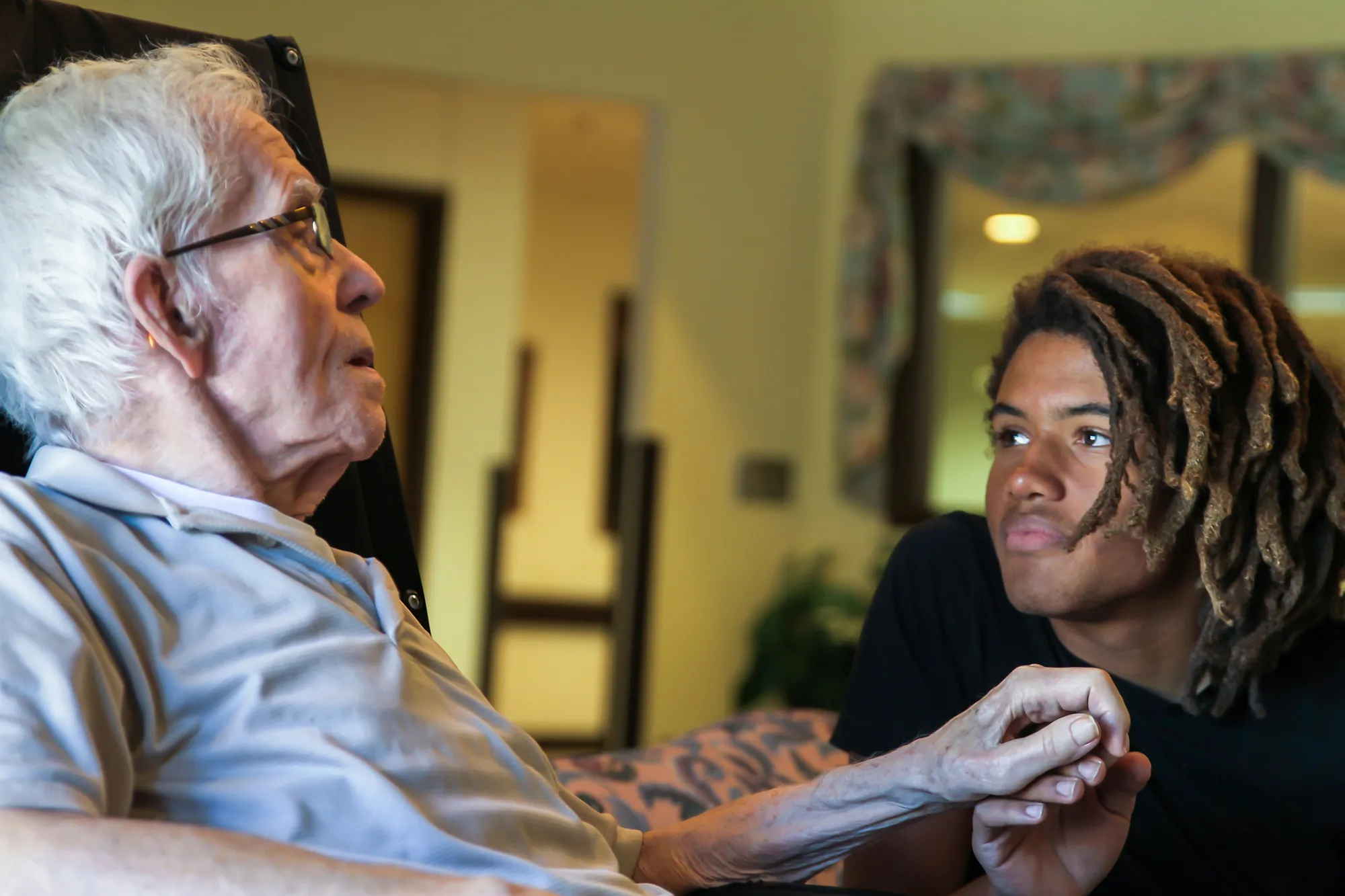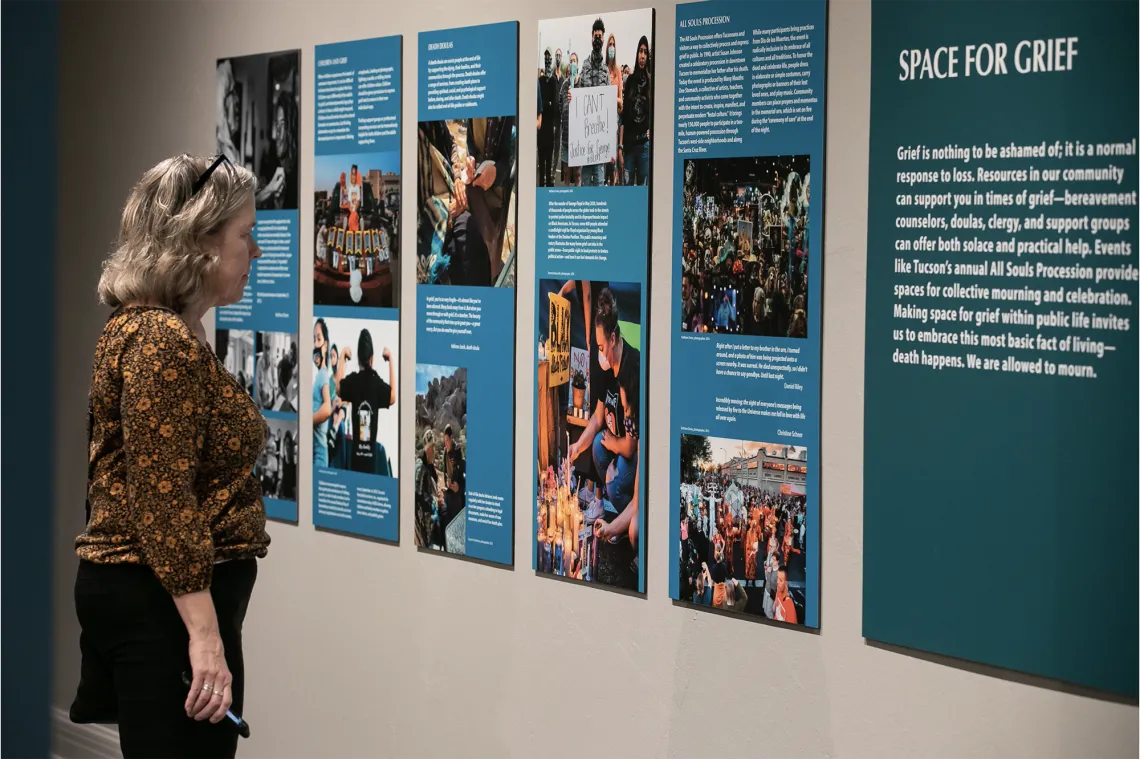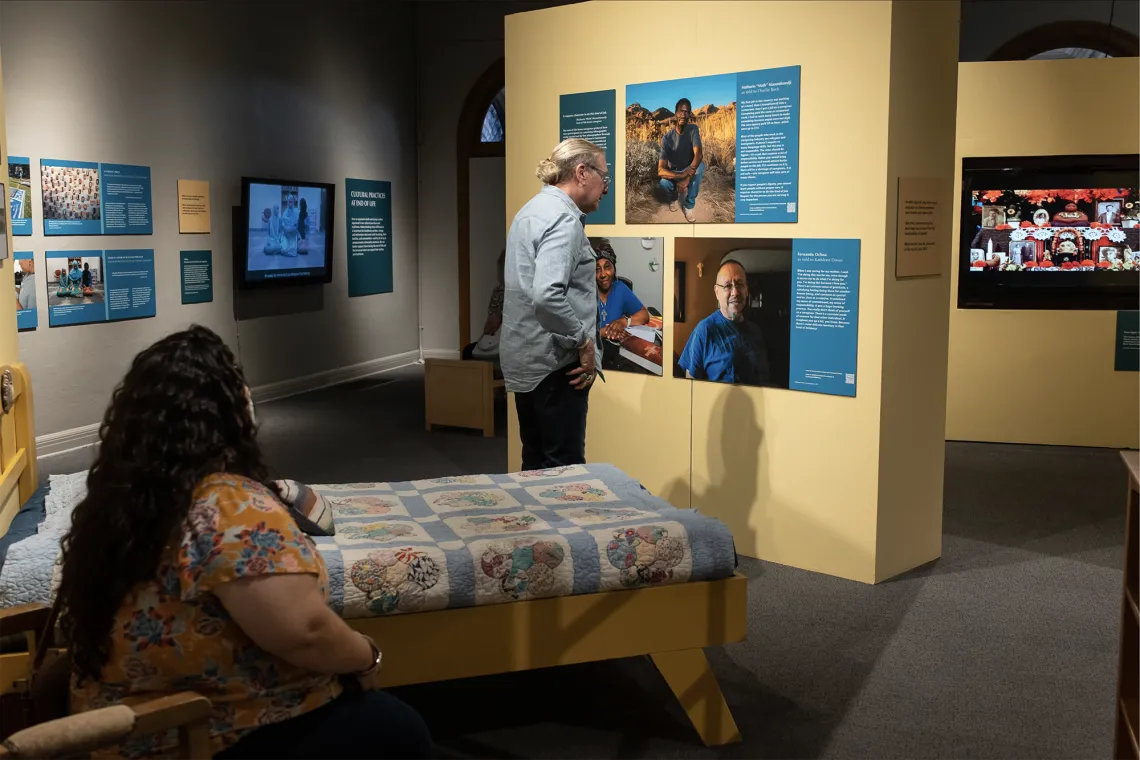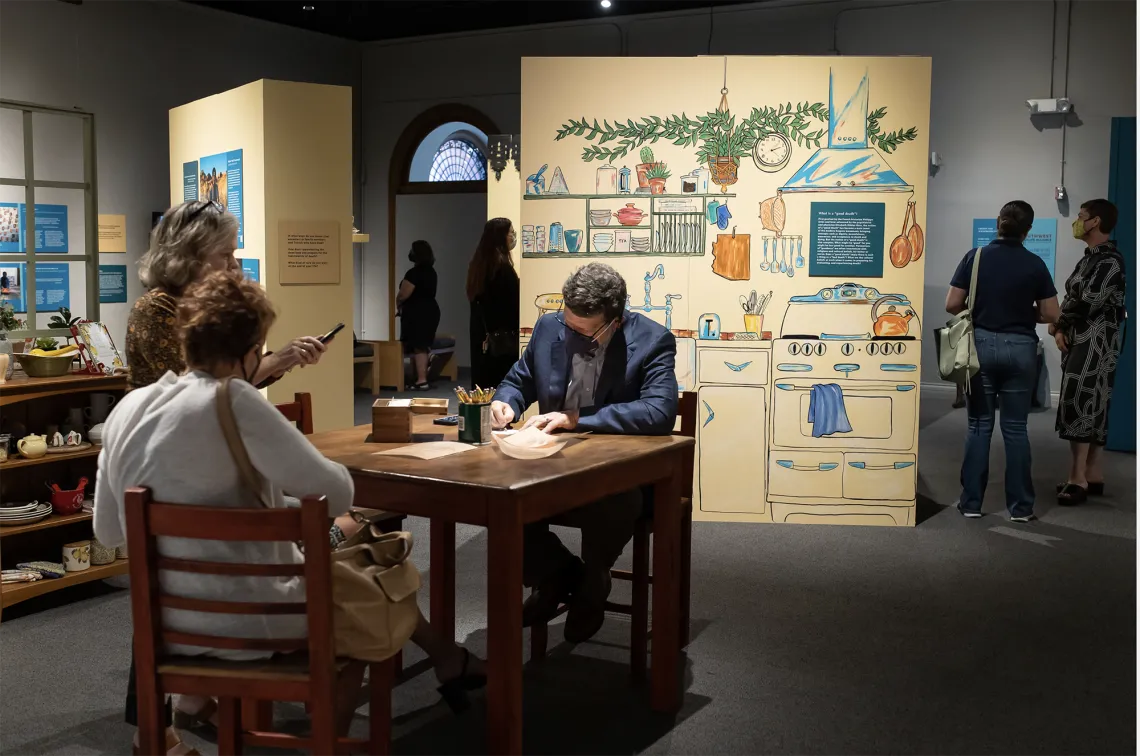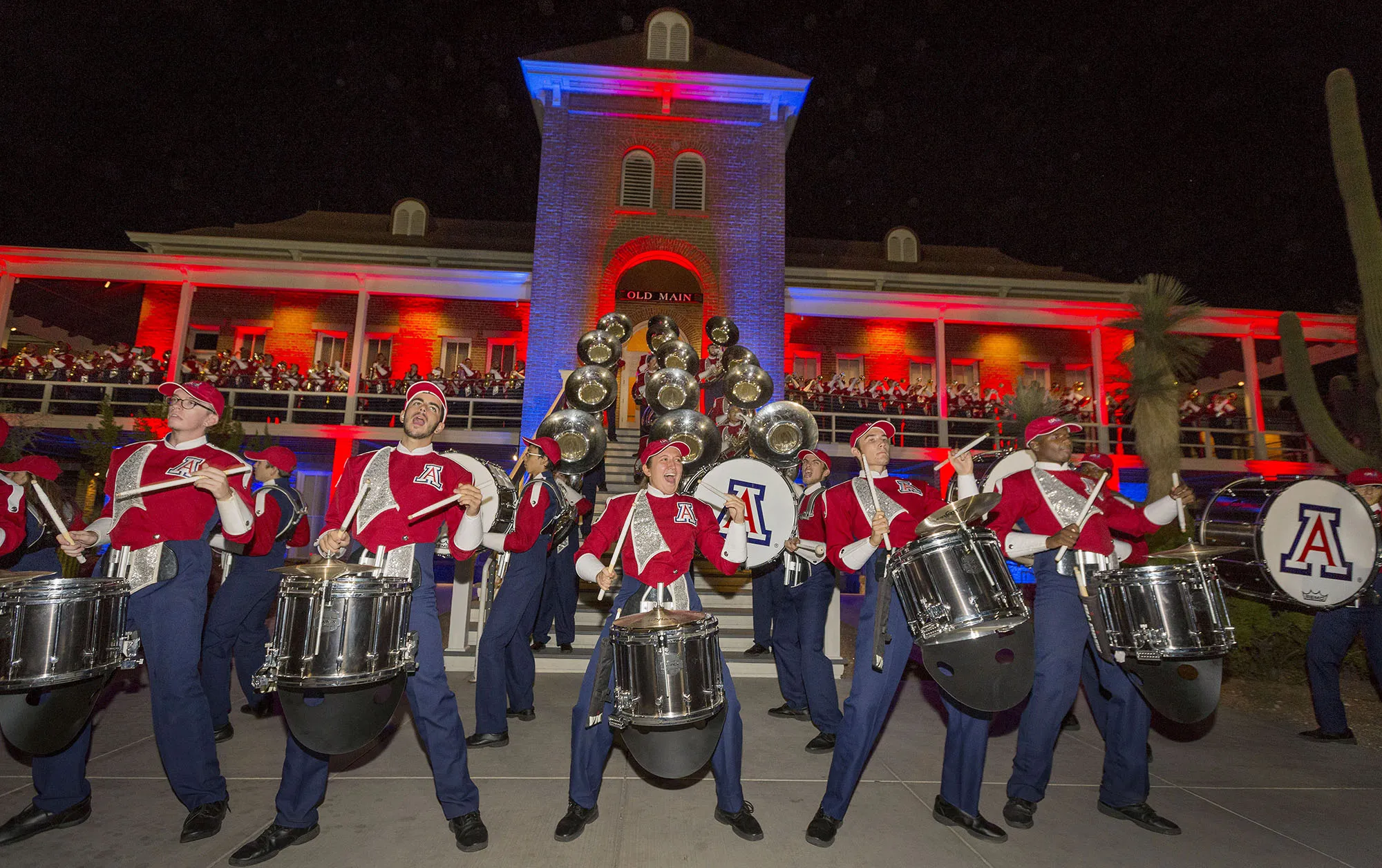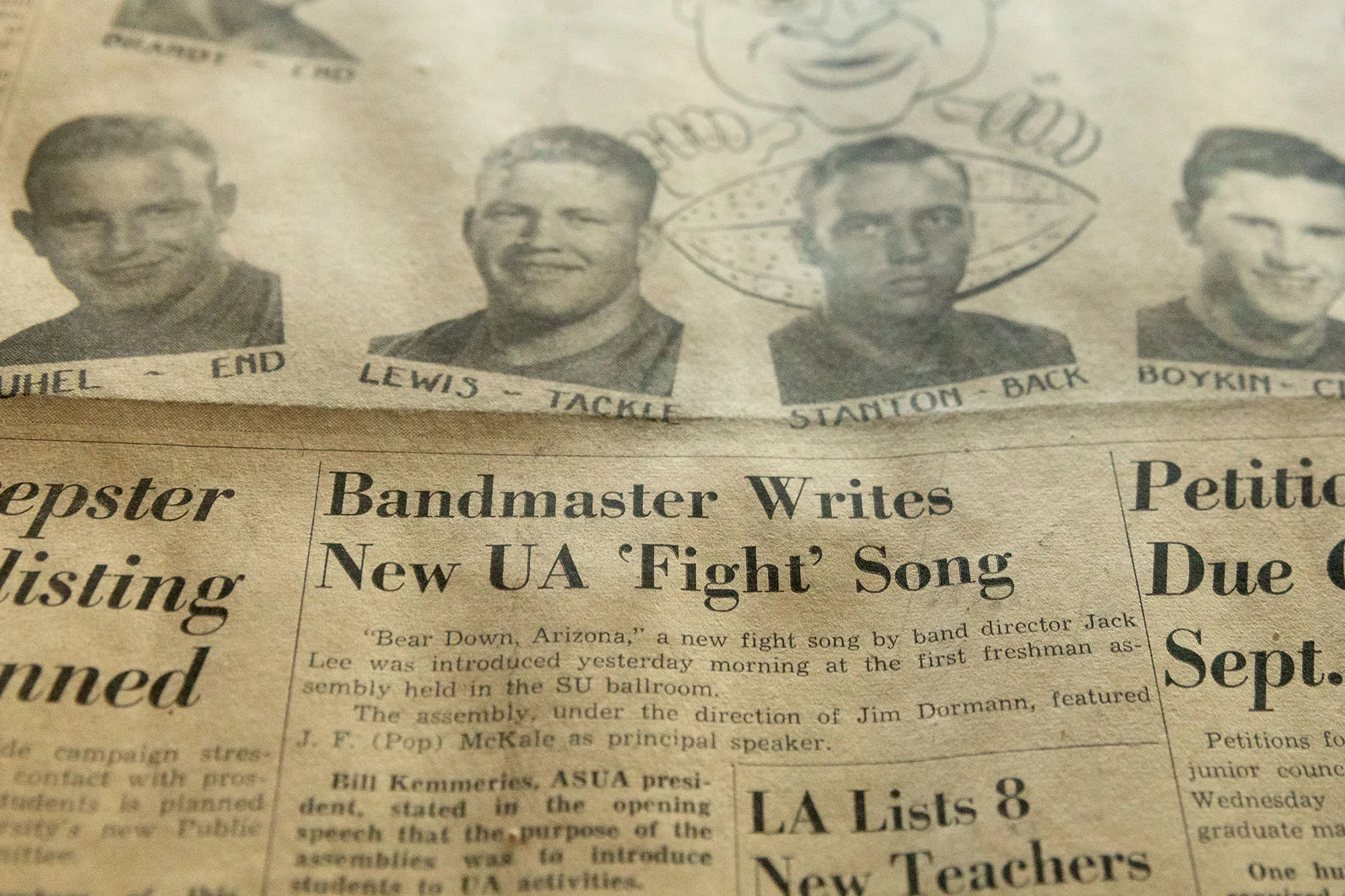Global Wildcat Love
Wildcats follow a campus wedding with global, service-oriented careers.
After meeting on a blind date, two University of Arizona students have spent an eye-opening 53-year marriage living in other countries, combating social injustices and supporting future generations of students.
As a chemical engineering student who worked his way through college, Scott Roberts ’69 didn’t have much time outside of school and work. Neither did Catherine Bontempo, soon to become Catherine Roberts, who was working by day and taking art classes at night.
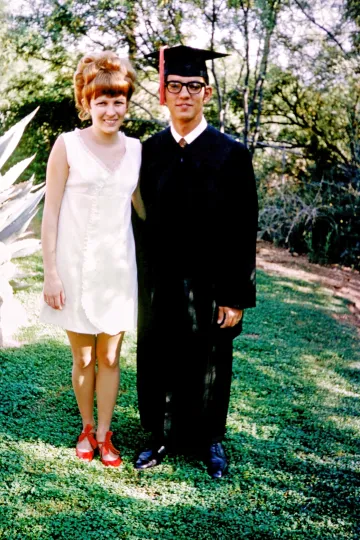
Early in their 1960s courtship, Catherine and Scott Roberts bonded over their interest in social justice, attending campus visits by the civil-rights activist John Lewis and the poet Allen Ginsberg.
/ Provided by the Roberts family
Luckily, the two crossed paths one night when their friends invited them along for a double date. Despite their jam-packed schedules, they formed a fast bond. Scott, who grew up in Tucson, says he never considered attending college anywhere but UArizona. Catherine recalls Scott’s parents, who were active in the social issues of the time, inviting groups of students over for home-cooked meals.
They were both eager to learn, not just from their classes, where they were soaking up knowledge about engineering and business, but also from the world around them, where they could learn how to combat social injustices. They attended campus visits by the beat poet Allen Ginsberg and by John Lewis, chairman of the Student Nonviolent Coordinating Committee and one of the “Big Six” group leaders behind the 1963 March on Washington.
“It was quite a vibrant campus for social awareness,” Catherine says. “We tried to attend some of those events, and we learned a great deal about what was going on in the world at the time.”
Bound by an interest in social justice issues and in seeing the world, they balanced each other out well: Catherine describes herself as creative and active, while Scott is a focused and committed problem solver. Just before Scott’s graduation, the two married on campus in the Newman Center, holding a reception in Maricopa Hall.
”We had our reception in that lovely historic building, and our student friends came,” Catherine says.
The couple moved to California right away so Scott could begin his career in research at Shell Oil Company. After just a year, he decided he wanted more education, so he went on to earn a Ph.D. in chemical engineering at the University of Washington in 1974. He then returned to Shell, where he worked 35 years around the United States and in several other countries before retiring in 2008.
They’ve lived a fascinating life together. When Scott was a graduate student, the two drove from Seattle to Costa Rica with their infant son to conduct field research. They left their experience abroad with an even deeper appreciation for service and the value of different perspectives. What followed was a lifetime spent working with people all over the world.
Whether working as the vice president of chemicals manufacturing in London, vice president of Northwest Europe Manufacturing in The Hague, or president of Shell Mexico in Mexico City, Scott says his UArizona education left him well prepared for his career. His hands-on engineering education taught him how to adapt to new challenges, even as engineering technologies, and his own career, grew in ways he never would have imagined in the 1960s.
“I think if you’re a kid growing up in Arizona, you’re so lucky to have a really fine university like the University of Arizona,” Scott says. “It’s way more affordable than most universities around the country, has excellent faculty and is, I think, doing some really interesting work in all kinds of different fields — not just chemical engineering but in space technology, materials science, mining and several other areas.”
Catherine describes her UArizona professors as “outstanding,” having equipped her with skills she’s applied throughout her life. An active philanthropist and volunteer, she has taught art to low-income communities and co-founded the Rutherford B H Yates Museum Inc., which provides exhibit space and educational programs related to African Diaspora history, preservation, architecture and more.
Now, the couple is dedicated to supporting a new generation of students. They’ve made a generous gift to support the Freshman Design Maker Space in the Engineering Student Design Center, a planned building for which fundraising is underway. Both believe it is critical for students to learn about hands-on engineering and the importance of collaboration, and they see the center as a key way to accomplish that.
“I think having a place that’s a relaxed setting where students can explore and create and design projects and share information is important,” Catherine says. “It helps them to know it’s really fun to come together and work in a diverse community of people from different ethnicities and cultures and religious backgrounds to work on solving one problem.”
It’s not the first time the couple has given back to their alma mater. To honor both their 50th wedding anniversary and 50 years since Scott’s graduation, the Robertses established a fund for UArizona chemical and environmental engineering students to gain on-campus research experience. Today, they support various organizations such as Amigos de las Américas, which offers volunteer experiences abroad for teenagers. The University of Washington College of Engineering honored Scott and Catherine with the Diamond Award for Distinguished Service in 2020, and the City of Scottsdale’s Pinnacle Peak Park named Scott its 2021 Volunteer of the Year. Through a lifetime of living in other countries and working with people from many backgrounds, the two have shared a strong foundation in their love for each other and formative years spent in Tucson.
“The UA is kind of a gateway into so many possibilities,” Scott says.

